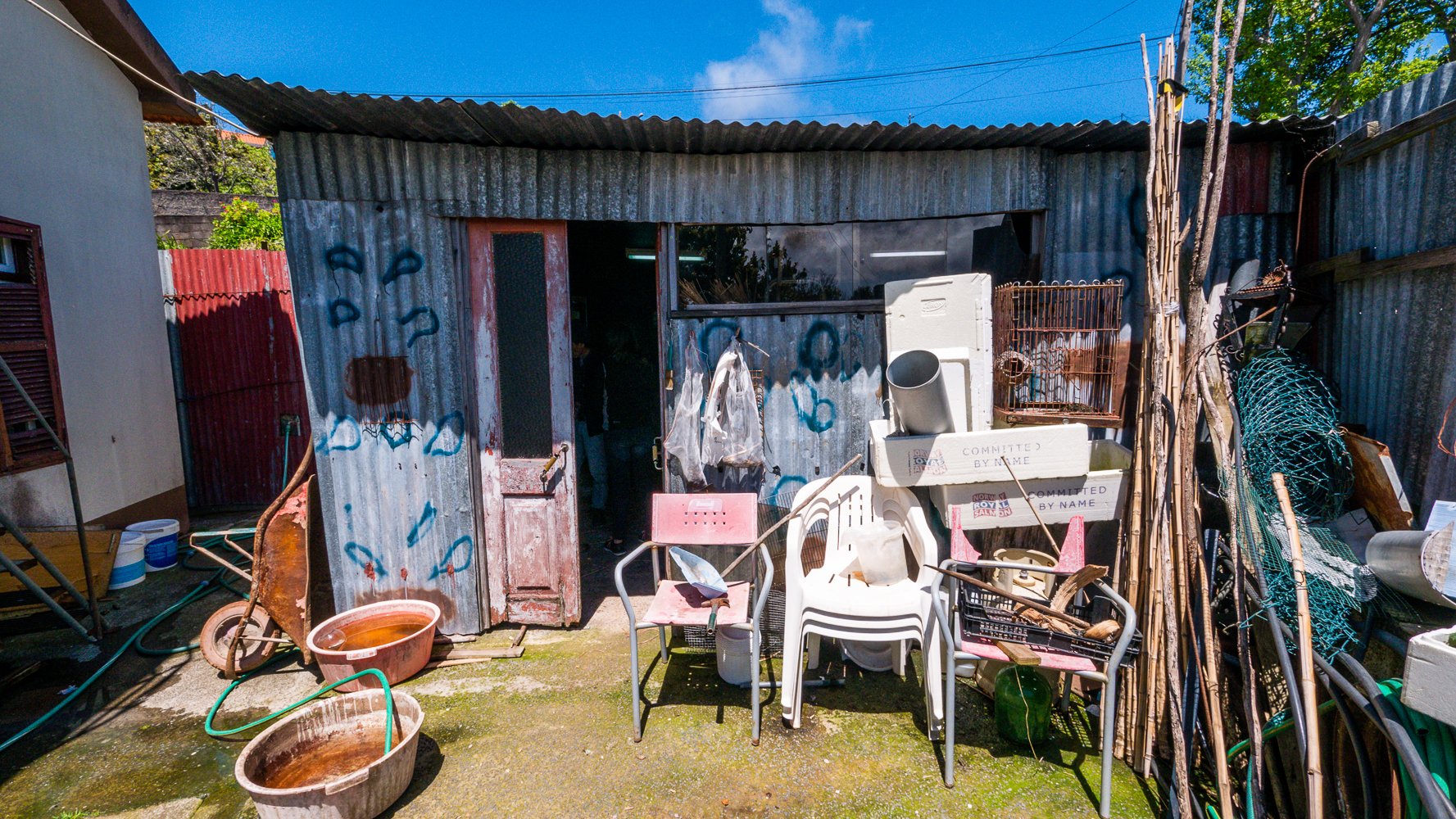The Wicker Man
There’s a pub in Camacha called ‘Moses Bar’. We stopped to ask directions and noticed an extensive selection of high-priced European beers in their coolers, odd given that Madeira is one of the cheapest places in Europe to buy a beer. These foreign brews were a hopping €10 to €12 a bottle!
Moses Bar as it turns out, is the starting & finishing point for a Levada walk popular with Dutch, Danish, Swedish and German tourists who no doubt are delighted to find a bottle of their national brew on their return - albeit 10 times the price of the local draft!
Over a glass of Coral (€1), I asked the barman if there was any connection between Moses Bar and the biblical anecdote of baby Moses floating down the Nile in a wicker basket. It turned out his uncle was called Moses!
THE WICKER MAN
José Fernandes, coincidentally or conveniently lives straight across the street from Moses Bar and is one of the very last of his kind in Madeira, a worker of wicker.
He was waiting to meet us at the gate, a mix between Carlos Santana and Sneezy of the Seven Dwarves!
I got the impression he and his wife were a bit suspicious of the ‘jornalista’ and his local handlers coming to visit them.
They led us through the yard slowly, almost reluctantly steering us past a chained-up ‘nasty’ dog while their more friendly puppy took a distinct liking to my shoelaces.
Around the back of the house stood a corrugated shed, evidently José’s workshop. Debris lay everywhere; stained plastic basins, an old rusted wheelbarrow propped up against the shed, faded deck chairs and arbitrary lengths of garden hose. The place had a distinct lived-in look!
Inside, using ancient tools, José demonstrated how he worked the wicker by dividing stalks of willow into three or four strips before fashioning them into various products.
BASKET CASE
“Wicker was once a thriving industry here in Madeira and the village of Camacha was at its core.”
Wicker was once a thriving industry here in Madeira and the village of Camacha was its centre. In the early days, steamships arrived mainly from the UK to the port of Funchal and the high-healed passengers would be transported to Camacha to buy wicker-ware: baskets, bags, bowls, chairs, tables and even full sets of furniture which were then transported back to the ship and home to jolly old England. I don’t think Jet2 would agree to it nowadays!
Wicker comes in many forms but I don’t think it would come in an aeroplane!
In more recent years, coaches came from the city bringing holidaymakers to visit the ‘Camacha Wicker Factory which was a good-going concern until around four years ago. A fairly attractive Art Deco-style building still represents the trade overlooking Camacha’s main square. Today it’s barred up and abandoned, the company bankrupt!
WICKER’S WORLD
The word “wicker” is actually Scandinavian, originating from the words ‘wika’ which means ‘to bend’ and ‘vikker’ which applies to the ‘willow’ plant.
It has been used for at least 5,000 years. The ancient Egyptians used rattan, a type of palm leaf to make containers, carriers and furniture. This went on with the Persians and Romans who adapted other plant materials for similar purposes. There is petrified evidence of wicker baskets being used in Pompeii. And of course, there was the Moses connection, one of the few Biblical tales I can remember.
On a side note, I introduced my golf friend Michael, the ‘vicar’ of the English Church here in Funchal to an Austrian friend. Sergio later asked why Michael was the ‘wicker’ of the English Church!
WICKER WORSHIP
By the Victorian era, wicker worship had reached its peak of popularity throughout the UK, Europe and North America. The material was regarded as robust, inexpensive, weather-resistant and environmentally friendly.
I remember in my younger day, laundry baskets, plant holders and my granny’s carpet beater (which doubled as a tennis racket and guitar) were all made from wicker. So did the headmaster’s cane, replaced in Scotland by a leather ‘strap’. Nasty people!
And don’t forget the famous wicker toboggans that career down the hills of Monte here in Madeira but that will be the subject of another story.
SATURDAY MARKET
Jose displays his wares at Camacha’s market every Saturday
Getting back to José Fernandes, the wicker-weaver who clings to his old trade making a few pieces each week in his garden shed then selling them at the Saturday market or ‘Mercadinho da Camacha’. We met him there!
It seemed he’d warmed to me by now, notably when I bought him a second Scotch whisky. I joined him of course only to be polite, José smoked heavily! “How old is he?” he asked my Madeiran girlfriend in Portuguese pointing at me. It turned out José was only a year older than I. It seems the wicker business is a hard life. Or maybe mine has been far too easy!
A wicker bra? I don’t think so!
Sitting outside sipping whisky and smoking, he told us he used to train young people in the art of wicker weaving but now, young folks were not interested. He’d even made a wicker bikini for a fashion shoot thinking that it might start a trend. A novel idea perhaps, I told him, but I wasn’t sure if it would catch on!










